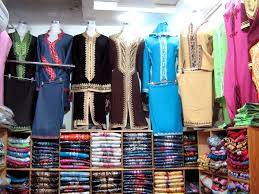Morocco, a country situated at the crossroads of Europe, Africa, and the Middle East, boasts a rich and diverse history that is intricately woven into its clothing traditions. The evolution of Moroccan attire reflects the confluence of various cultures, influences, and historical events over centuries, creating a vibrant tapestry of styles and textiles.
Ancient Beginnings
The history of clothing in Morocco can be traced back to ancient times when the indigenous Berber people inhabited the region. The Berbers, known for their distinct cultural practices, wore simple garments made from wool, leather, and cotton. Their clothing often featured vibrant colors and intricate patterns, reflecting their connection to nature and the landscapes surrounding them.
As trade routes developed, particularly during the Phoenician and Roman periods, new materials and styles began to influence local fashion. The introduction of silk and fine wool from the East transformed Moroccan textiles, allowing artisans to experiment with elaborate embroidery and weaving techniques.
The Islamic Influence
The arrival of Islam in the 7th century brought significant changes to Moroccan clothing. Islamic teachings encouraged modesty in dress, leading to the adoption of loose-fitting garments for both men and women. The djellaba, a long, hooded robe, emerged during this time as a practical and stylish option for everyday wear. Its design varies across regions, with different colors and embellishments reflecting local traditions.
The kaftan also gained popularity, particularly among women, becoming a symbol of elegance and sophistication. Made from luxurious fabrics and adorned with intricate embroidery, the kaftan is often worn during special occasions, such as weddings and festivals.
The Era of the Sultanates
The establishment of various sultanates in Morocco, such as the Almoravids and the Almohads, further enriched the country’s clothing traditions. The influence of Spanish and Portuguese styles during the 15th and 16th centuries introduced new fabrics and designs, blending seamlessly with local attire.
During the Saadian dynasty in the 16th century, clothing became a sign of social status and wealth. Elaborate garments adorned with gold thread and precious stones were reserved for the elite. This period also saw the rise of skilled artisans, particularly in cities like Marrakech and Fez, who began to produce exquisite textiles, jewelry, and leather goods.
Colonial Influence
The late 19th and early 20th centuries brought colonial influence to Morocco, particularly from France and Spain. While traditional clothing remained prevalent, Western styles began to infiltrate urban areas. The introduction of modern fabrics and techniques led to a fusion of styles, creating new fashion trends that appealed to the younger generations.
Despite these changes, many Moroccans continued to embrace their cultural heritage. The return to traditional attire, particularly during national holidays and cultural events, symbolized a resistance to colonial influence and a reaffirmation of Moroccan identity.
Modern Times and Revival
Today, Moroccan clothing remains a vibrant reflection of the country’s history and cultural diversity. Traditional garments like the djellaba and kaftan are still widely worn, often customized with contemporary touches to appeal to modern sensibilities. Designers are increasingly blending traditional techniques with modern fashion, creating unique pieces that celebrate Morocco’s rich heritage while catering to global tastes.
Furthermore, there is a growing interest in sustainable fashion, with many artisans focusing on eco-friendly practices and preserving traditional craftsmanship. This revival has not only supported local economies but also ensured the survival of age-old techniques and styles.
The history of clothing in Morocco is a fascinating journey through time, marked by the interplay of various cultures, influences, and innovations. From the simple garments of the Berber people to the luxurious kaftans of today, Moroccan attire tells a story of resilience, adaptation, and cultural pride. As Morocco continues to evolve, its clothing traditions remain a vital link to its past, celebrating the beauty and diversity of a nation at the crossroads of the world.

